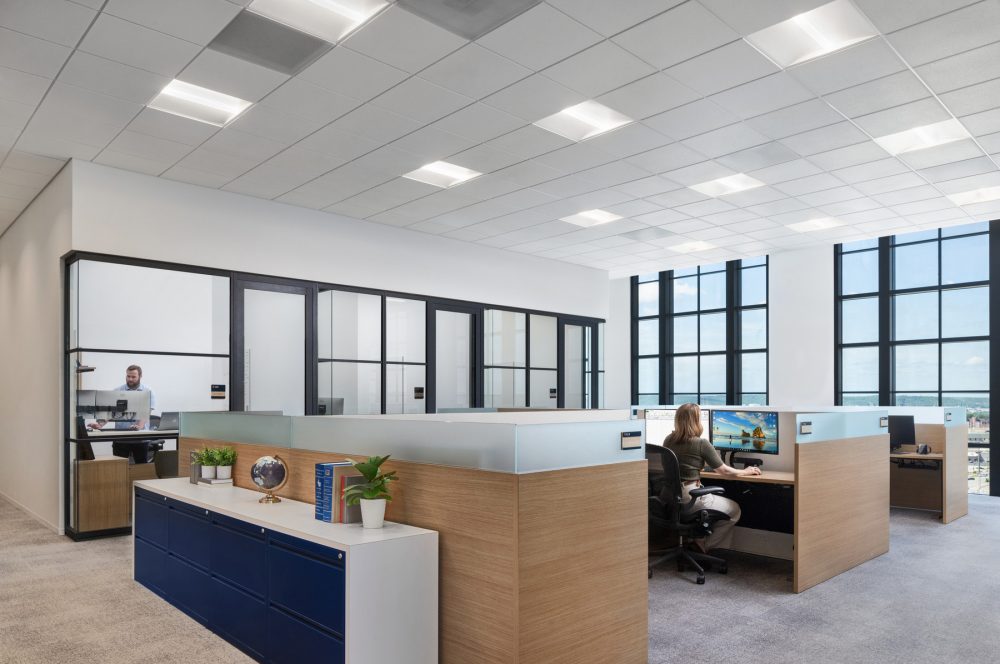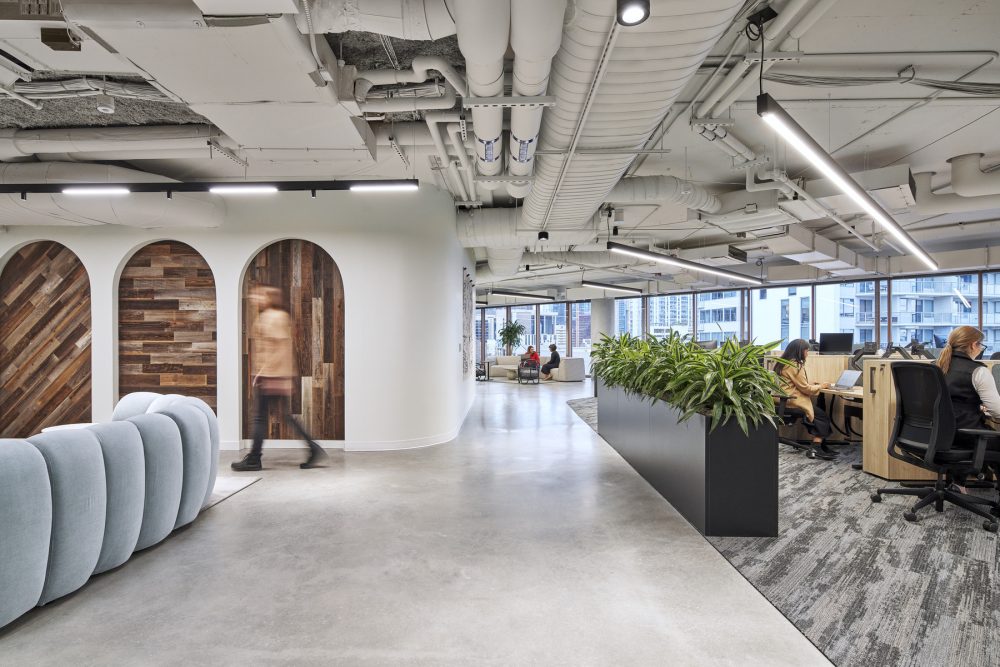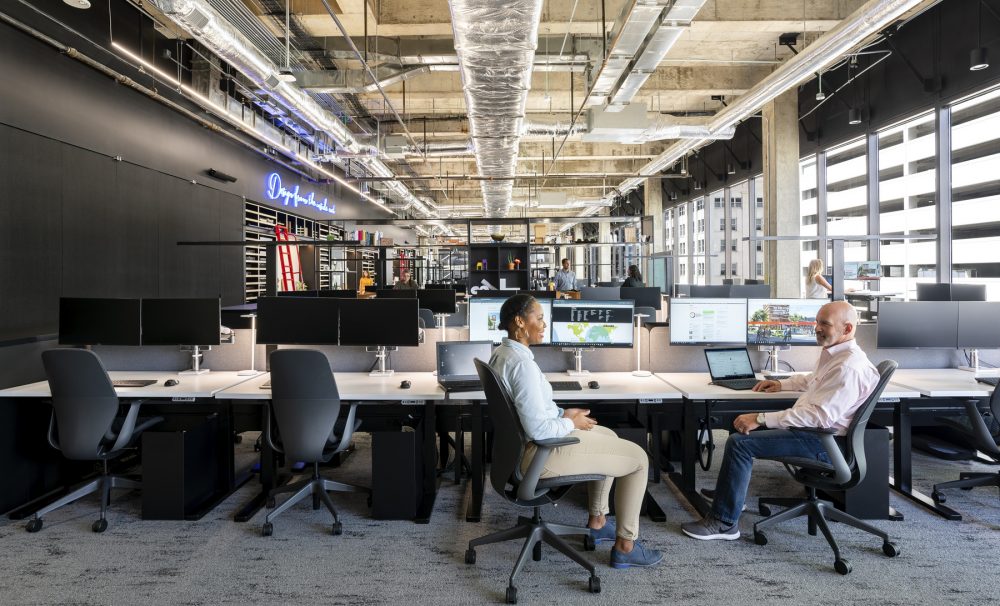As work and life evolve, personalized workspace design is becoming essential—helping employees find comfort, focus and well-being in the modern office.
After experiencing significant life changes, it can be surprising where people find peace and stability. In fact, sometimes it can be found in the middle of a corporate office. In times of transition, people often turn to familiar routines or surroundings to regain a sense of normalcy. One powerful way to create a comfortable environment is by space customization. For example, a simple act of bringing plants into a workspace can gradually transform a standard desk into a lush retreat. What might appear to be casual decoration is a deeper psychological response known as personalization and territoriality.
By shaping their surroundings, individuals reclaim a sense of identity, control, and grounding during a time of upheaval.
This life experience serves as a reminder that even in the most structured and uniform workplaces, people naturally seek meaningful spaces. With most working Americans reported to spend an average of 8.4 hours a day in the office in 2024, the need to create a workspace that is not only functional but also conveys a sense of self, purpose, and security fuels individual psychosocial needs.
Creating Privacy
Although the office is considered public territory, people have a strong desire to make their desk a personal space where they can accessorize and organize as a method of expression and ownership.
Foremost, a sense of privacy is crucial for autonomy, safety, and psychological well-being. Privacy in a corporate environment allows for the freedom to make decisions, develop opinions, and explore ideas without fear of constant observation or judgment. As such, it is an important ingredient for creativity and innovation.

In practice, employees can maintain this level of privacy by incorporating low-profile screening elements or dividers, which offer visual and acoustic separation without obstructing lines of sight entirely. This can be achieved with strategically placed indoor plants or using storage units like a laptop stand with room for books and papers below, and stationary cups and tubs for essentials.
Managing Auditory Stimulation
While visual and spatial adjustments can enhance a sense of personal comfort, managing auditory distractions presents a more complex challenge, especially in an open floor plan. Many studies have shown that constant noise can reduce mental agility and cognitive performance. In a busy office, the soundscape of virtual calls and meetings taken at individual desks rather than conference rooms and teams collaborating and connecting to impromptu problem solve at open touchdowns are all common occurrences that stress and distract nearby colleagues.
To alleviate potential issues, the use of noise-cancelling headphones can help manage aural stimulation and offer control and comfort by providing a way to tune out distractions and zone in on focus work. To absorb sound waves and reduce the reverberation of noise in an open workspace, desk clamping acoustic panels made from felt and foam can be used to block and dampen sound, creating an environment for concentration and reduced stress.
Utilizing Strategic Lighting
Just as sound can shape our ability to focus and feel at ease, lighting plays a similarly critical role in supporting comfort and well-being in the workplace. Unfortunately, corporate office lighting is not always calibrated with end-user comfort in mind, particularly if the space has evolved over time. When designed properly, lighting can actively promote and support a user’s health and well-being, rather than simply avoiding negative health outcomes.

At a personal level, employees can create a more cohesive experience with the strategic use of task lighting, which can be adapted to fit immediate needs and provide varying levels of illumination intensity for shifting control throughout the workday. Additionally, adjusting the lighting levels of monitor screens, changing background colors in applications, and the individual use of blue light eye wear are all advantageous methods of dealing with light sensitivity, which can trigger fatigue, reduce cognitive agility, increase headaches, and cause ocular irritation.
Organizing Personal Space for Navigability
Beyond lighting, the organization and personalization of one’s immediate workspace also play a vital role in shaping comfort, clarity, and emotional connection throughout the day. Just as lighting influences mood and productivity, the physical layout of a workspace and the ability to move through it with ease can further enhance a sense of control.
To achieve greater navigability, keep the most used area of a desk, the area directly in front of the user, clutter-free. This is the primary “path,” and it should be easy to access without obstruction. To maximize the use of vertical space, organizers and shelves can be installed to create distinct “districts.” This reduces the primary work surface visual noise and makes items easier to locate. The principle of legibility can also be applied directly by labeling containers, files, and drawers in order to develop a coherent visual language. Lastly, whether minimalist or eclectic, an organizing principle, such as a consistent color palette for storage or a specific type of container, enhances overall imageability.
Designing Space for Psychological Needs
As designers, it’s necessary to plan for and provide space for the psychological needs of those who will engage with and dwell within the environments we create. While aesthetics and functionality are foundational, the emotional and cognitive experience of the user is equally vital.

The modern workplace is no longer just a setting for productivity; it’s a place where people seek connection, clarity, and control. By integrating opportunities for personalization, privacy, acoustic and visual comfort, and intuitive organization, we empower individuals to feel more grounded and supported in their daily routines. These seemingly small design choices can have a profound impact on well-being, engagement, and overall satisfaction.


